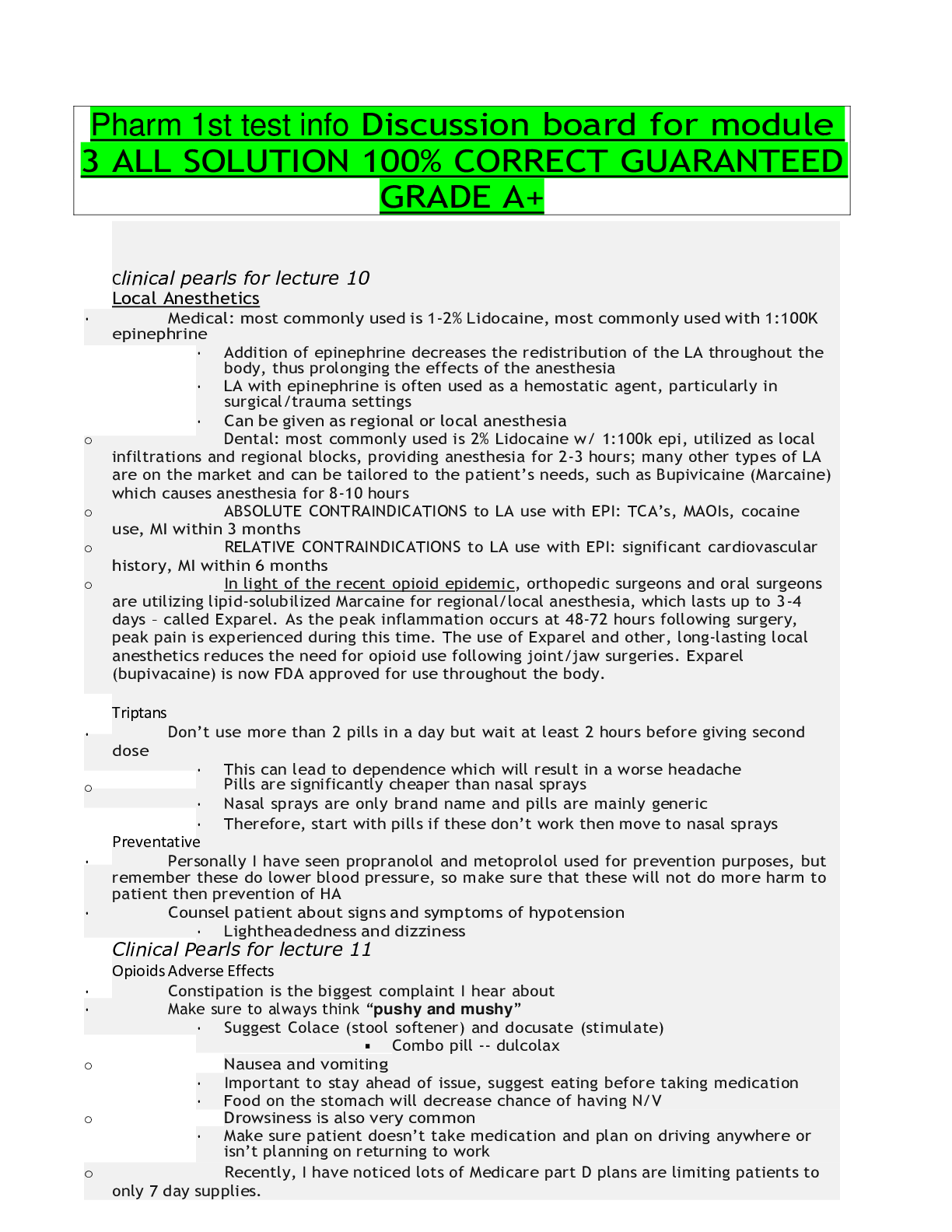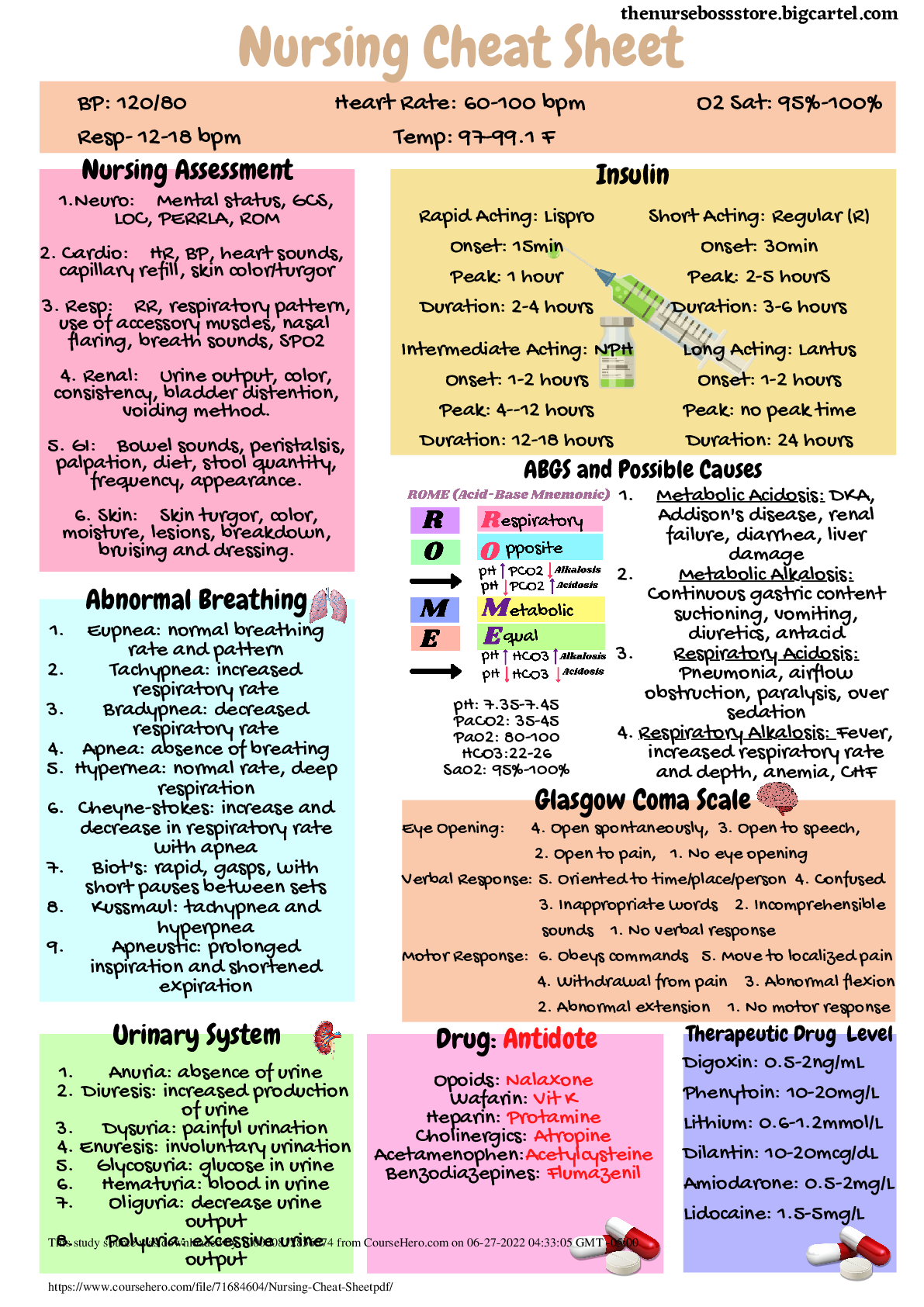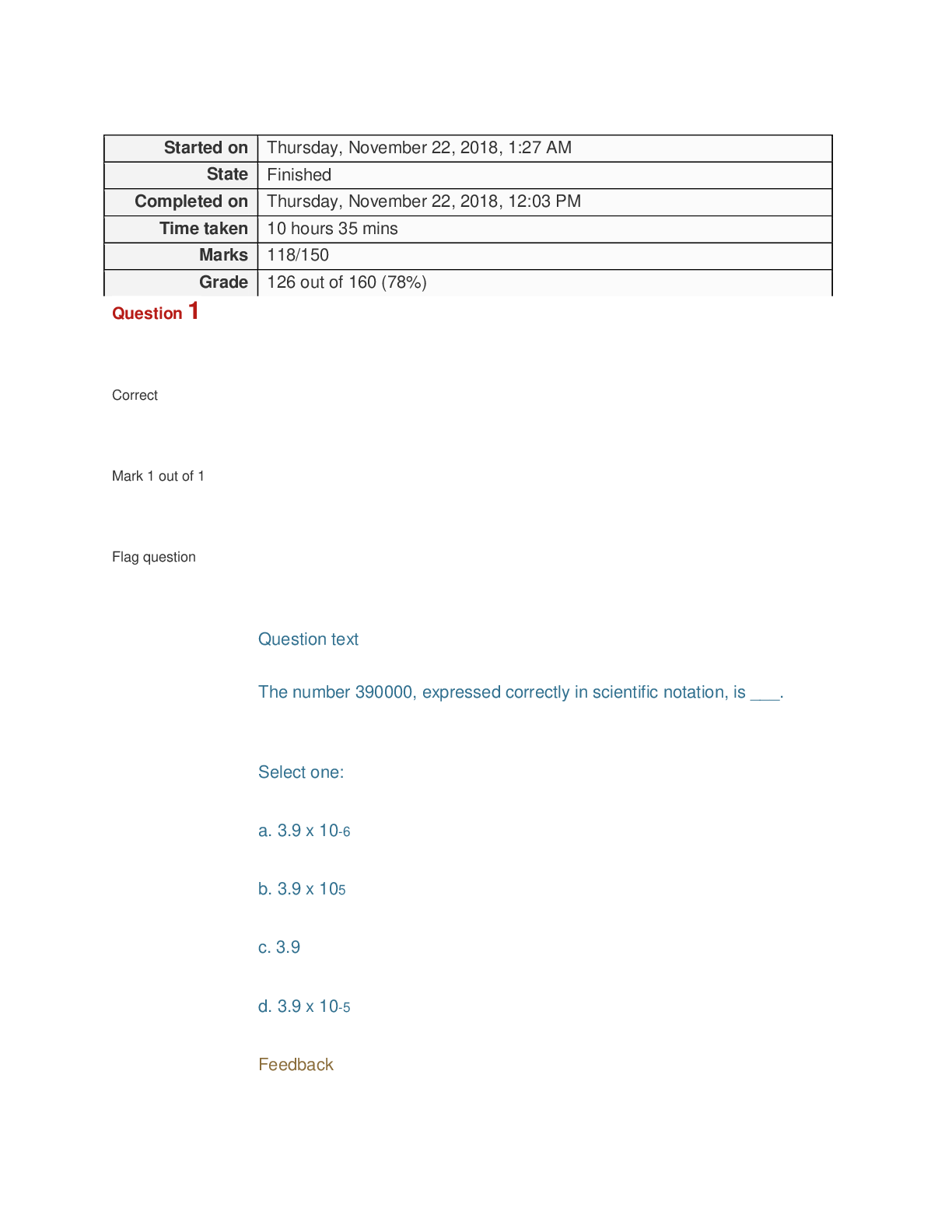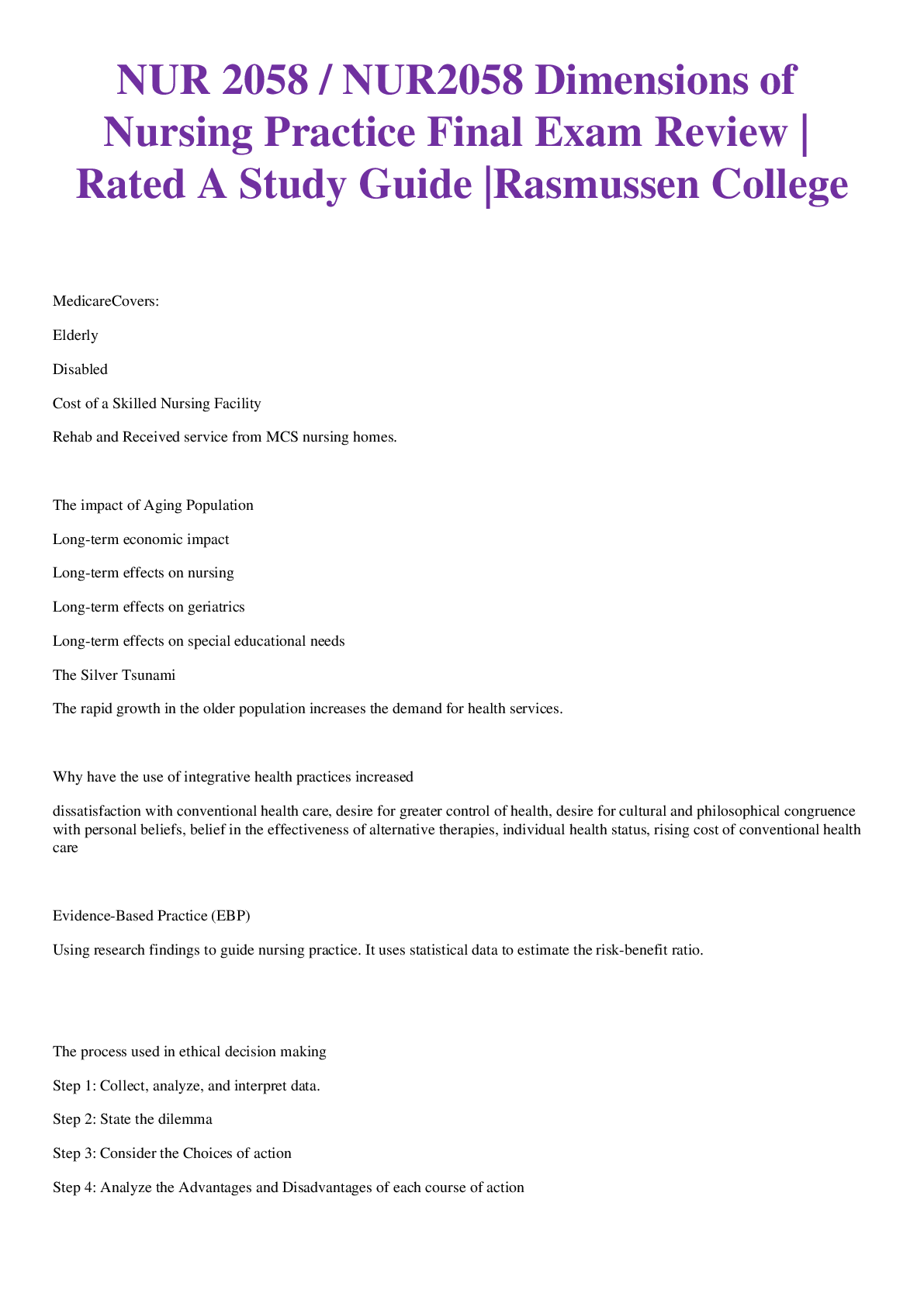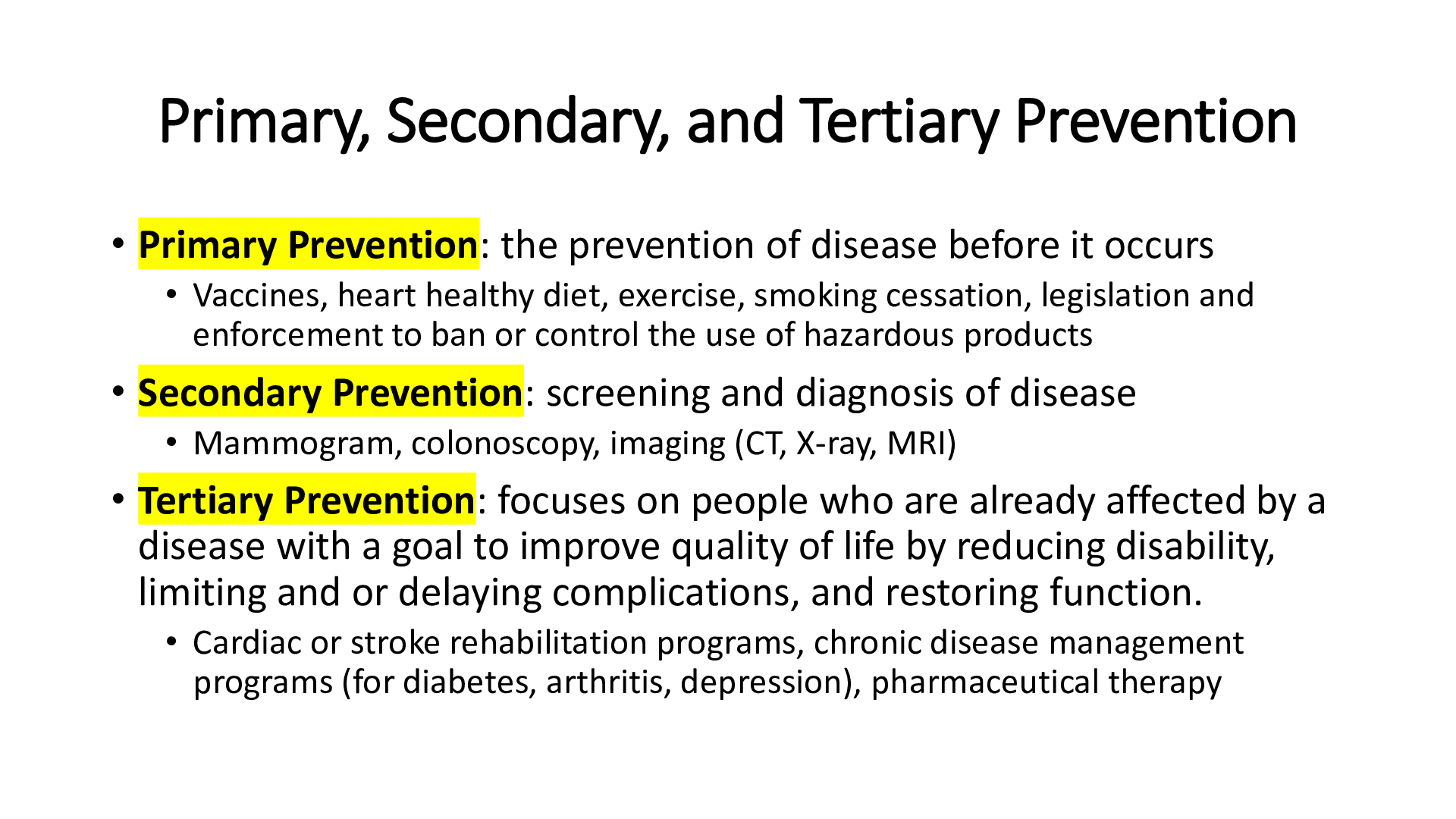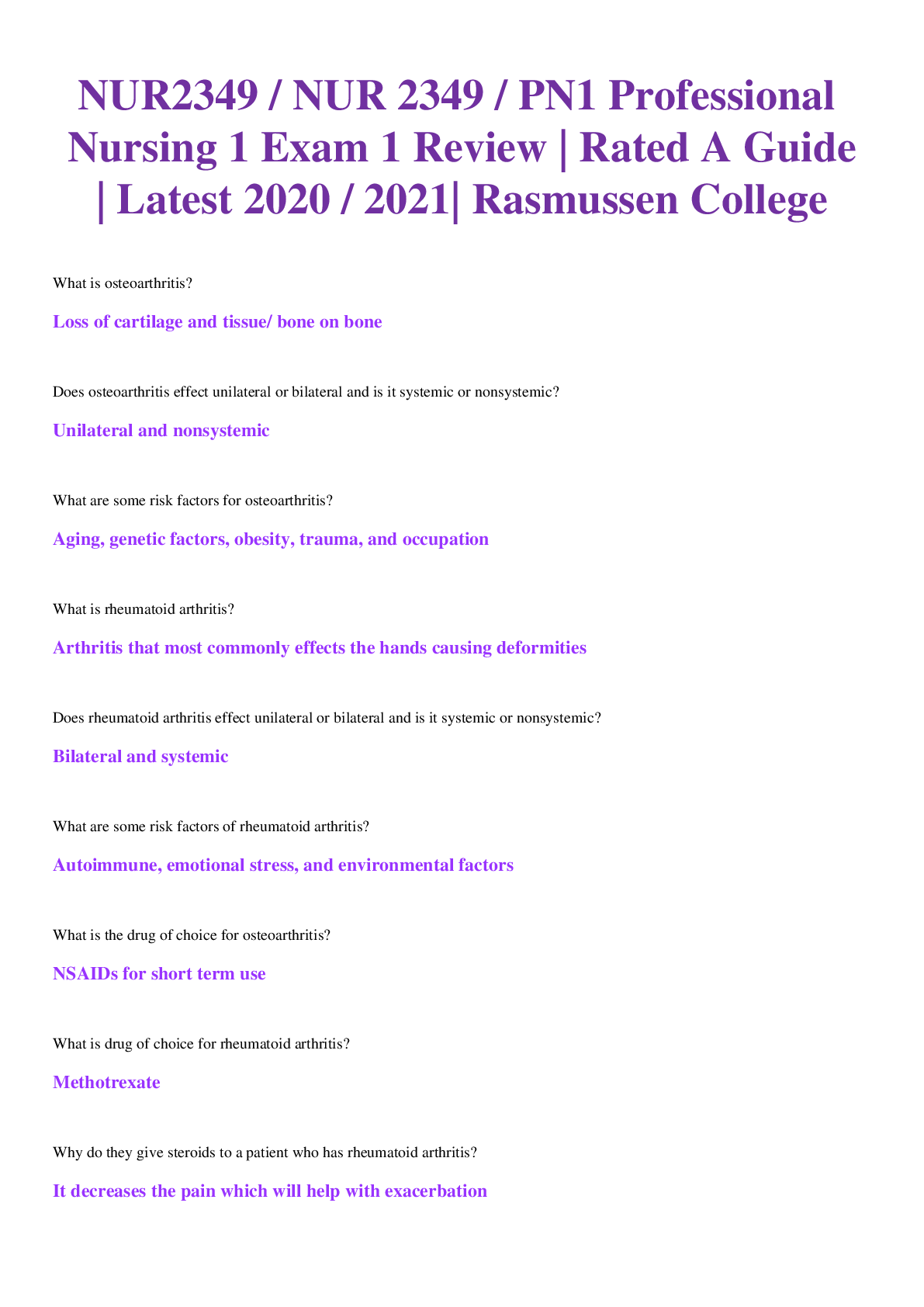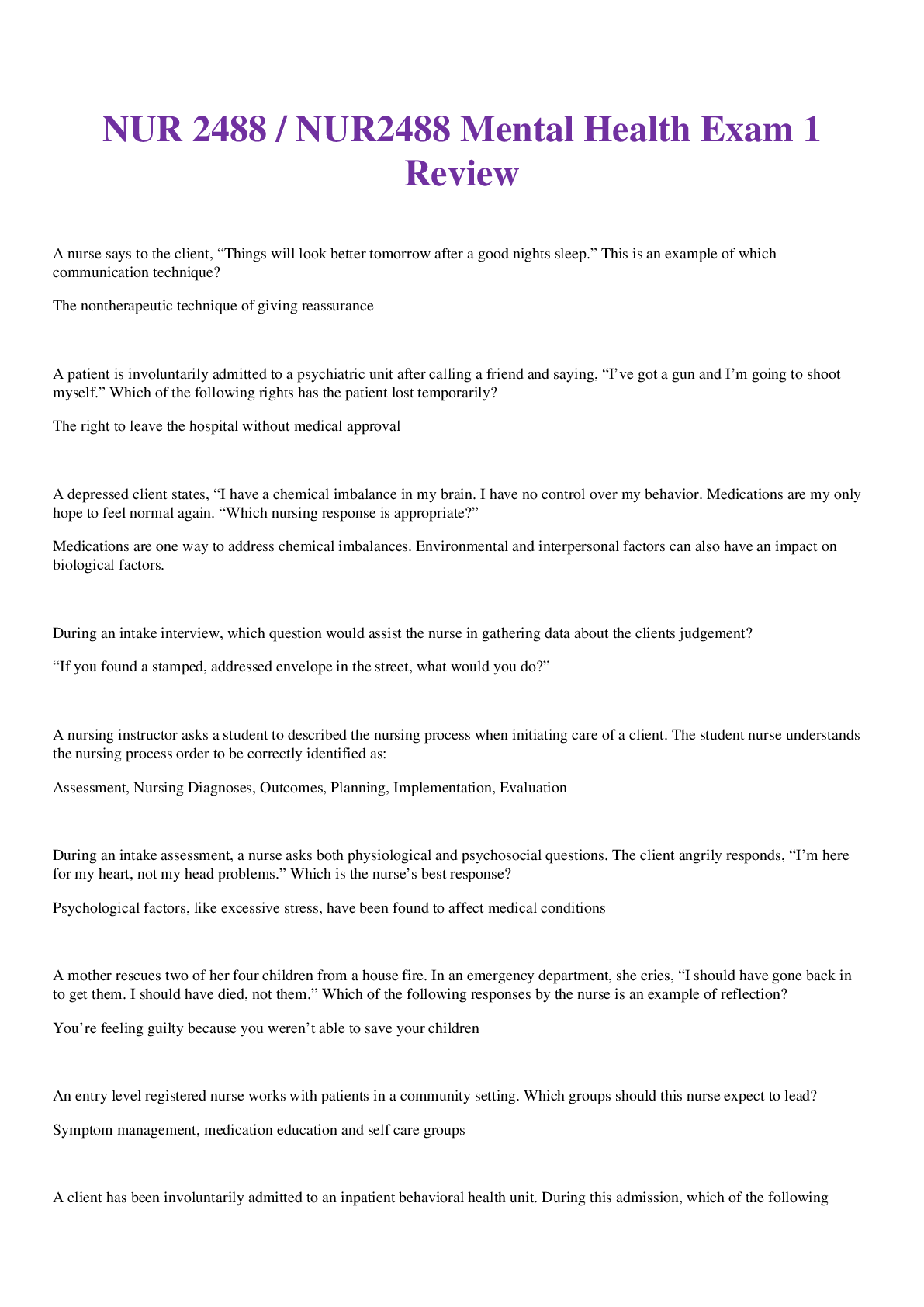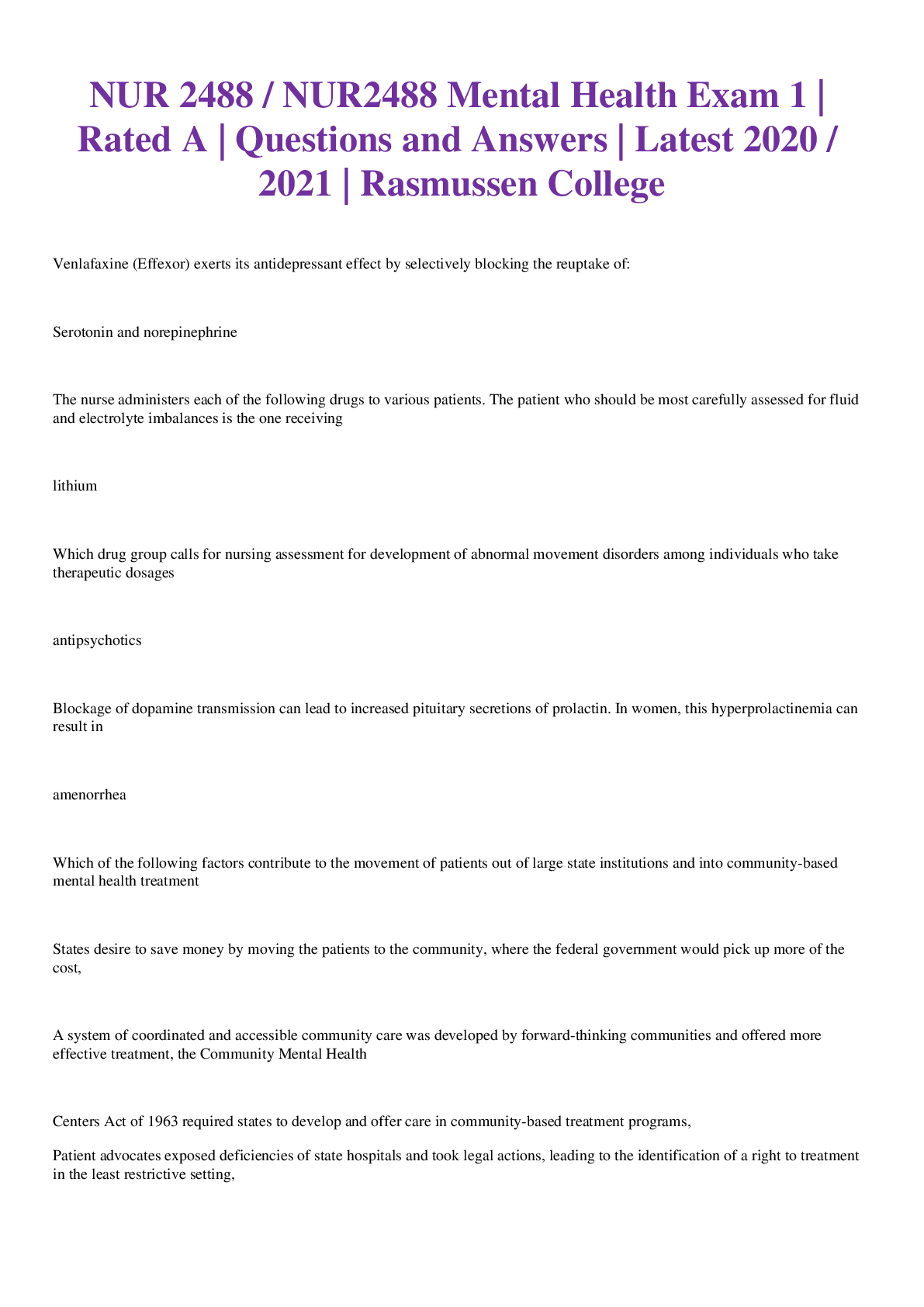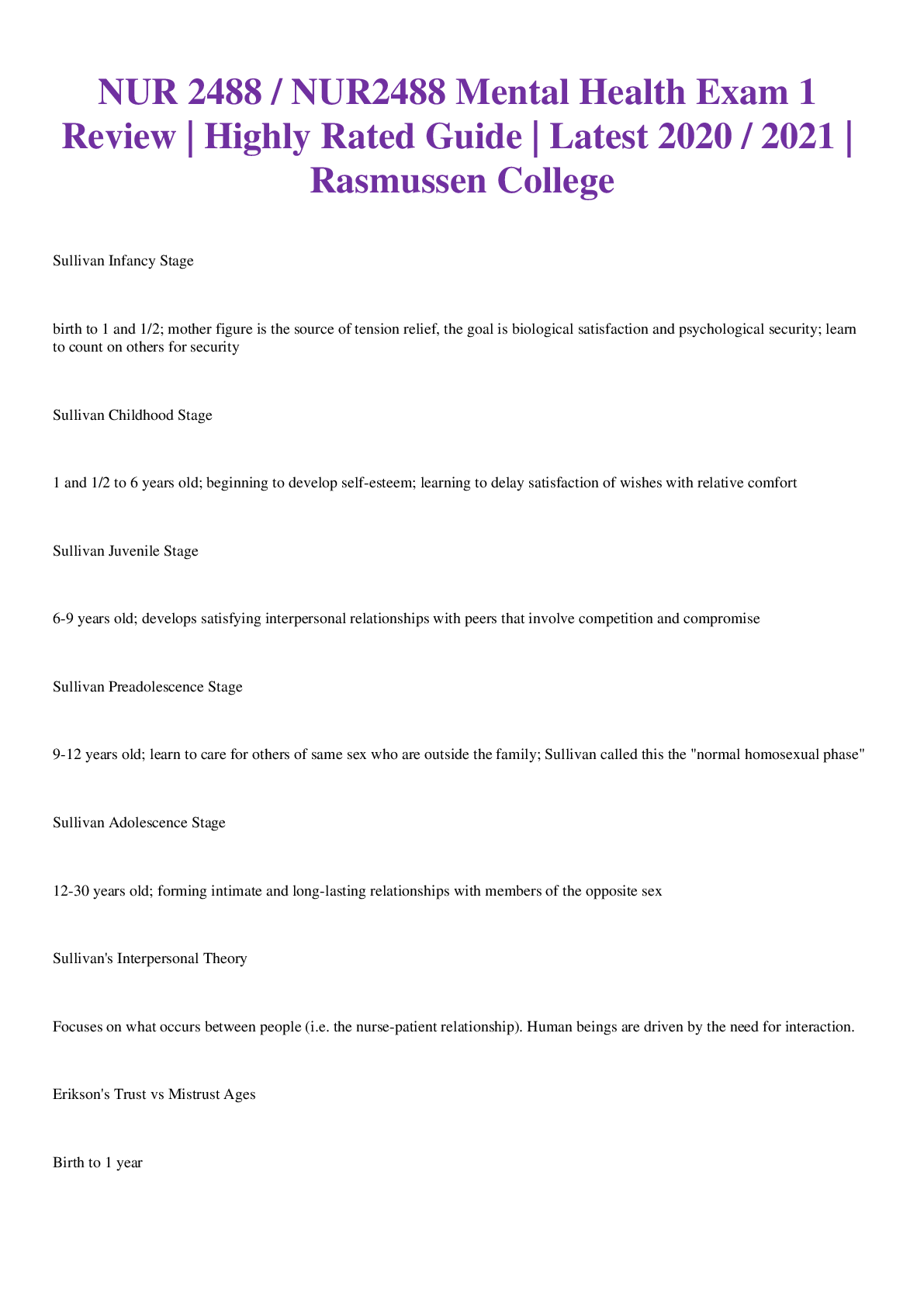*NURSING > EXAM REVIEW > ATLS-QUESTIONS WITH ANSWERS MCQ 2021 (All)
ATLS-QUESTIONS WITH ANSWERS MCQ 2021
Document Content and Description Below
A 22 year old man is hypotensive and tachycardic after a shotgun wound to the left shoulder. His blood pressure is initially 80/40 mmHg. After 2 liters of crystalloid solution his blood pressure inc... reases to 122/84 mmHg His heart rate is now 100 beats per minute and his respiratory rate is 28 breaths per minute. His breath sounds are decreased in the left hemithorax, and after initial IV fluid resuscitation, a closed tube thoracostomy is performed for decreased left breath sounds with the return of a small amount of blood and no air leak. After chest tube insertion, the most approriate next step is a) reexamine the chest b) perform an aortogram c) obtain a CT scan of the chest d) Obtain arterial blood gas analyses e) perform tranesohageal echocardiography (and a makes more sense to me. so i'll go with a) info: chest tube insertion, p.108 ATLS MCQ #3 During the third trimester of pregnancy, all of the following changesoccur normally EXCEPT a a) decrease in PaCO2 b) decrease in leukocyte count c) reduced gastric emptying rate d) diminished residual lung volume e) diminished elvic ligament tension info: page 261 ATLS MCQ #4 In managing the head injured patient,the most important initial step is to a) secure the airway b. obtain c-spine film c) support circulation c) control scalp hemorrhage e) determine the GCS score info: p.154 ATLS MCQ #5 A previously healthy, 70kg (154 pound) man suffers an estimated acute blood loss of 2 liters. Which one of the following statements applies to this patient? a) his pulse pressure will be widened b) his urinary output will be at the lower limits of normal c) he will have tachycardia, but no change in his systolic blood pressure d) his systolic blood pressure will be decreased with a narrowed pulse ressure (true) e) his systolic blood pressure will be maintained with an elevated diastolicpressure info. page 61 ATLS MCQ #6 The physiologic hypervolemia of pregnancy has clinical significance in the management of the severely injured, gravid woman by a) reducing the need for blood transfusion b) increasing the risk of pulmonary edema c) complicating the management of closed head injury d) reducing the volume of crystalloid required for resuscitation e) increasing the volume of blood loss to produce maternal hypotension info. page 261 ATLS MCQ #7 The best guide for adequate fluid resuscitation of the burn patient is a) adequate urinary output b) reversal of systemic acidosis c) normalization of the heart rate d) a normal central venous pressure e) 4mL/kg/percent body burn/24 hours info: pg. 216-217 background: The adequacy of therapy is confirmed by simple determination of adequate urine output and of the haemoglobin and haematocrit levels. The most important guide is the patient’s clinical response source: http://www.medbc.com/annals/review/vol_16/num_4/text/vol16n4p173.asp ATLS MCQ #8 Establishing a diagnosis of shock must include a) hypoxemia b) acidosis c) hypotension d) increased vascular resistance e) evidence of inadequate organ perfusion the info: p.58 ATLS MCQ #9 A 7 year old boy is brought to the emergency department by his parents several minutes after he fell through a window. He is bleeding profusely from a 6-cm wound of his medial right thigh.Immediate management of the wound should consist of a) application of a tourniquet b) direct pressure on the wound c) packing the wound with gauze d) direct pressure on the femoral artery at the groin e) debridement of devitalized tissue info is: p.79; in obvious external bleeding section on table background - tourniquet can be found on p.194, 195. they imply that you use a tourniquet if you are choosing life over limb, and if direct pressure isn't working. (p.195) ATLS MCQ #10 For the patient with severe traumatic brain injury, profound hypocarbia should be avoided to prevent a) respiratory alkalosis b) metabolic acidosis c) cerebral vasoconstriction with diminished perfusion d) neurogenic pulmonary edema e) shift of the oxyhemoglobin dissociation curve info is: related info on page 136,137 -------- background info Carbon dioxide is perhaps the most potent available modulator of cerebrovascular tone and thus cerebral blood flow (CBF) http://www.liebertonline.com/doi/abs/10.1089/089771501750055776?journal Code=neu ----------- Hypercarbia and hypoxia are both potent cerebral vasodilators that result in increased cerebral blood flow and volume and, potentially, increased ICP; thus, they must be avoided. Orotracheal intubation allows for airway protection in patients who are severely obtunded and allows for better control of oxygenation and ventilation. http://emedicine.medscape.com/article/909105-overview ------------ ATLS MCQ #11 A 25 year old man is brought to a hospital with a general surgeon after being involved in a motor vehicle crash. He has a GCS of 13 and complains of abdominal pain. His blood pressure was 80mHg systolic by palpation on arrival at the hospital, but increases to 110/70 mmHg with the administration of 2 liters of intravenous fluid. His heart rate remains 120 beats per minute. Computed tomography shows an aortic injury and splenic laceration with free abdominal fluid. His blood pressure falls to 70mmHg after CT. The next step is a) contrast angiography b) transfer to higher level trauma center c) exploratory laparotomy d) transfuse packed red blood cells e) transesophageal echocardiography info: page 12 - list background info: none for now ATLS MCQ #12 Which one of the following statements regarding abdominal trauma in the pregnant patient is true? a) the fetus is in jeopardy only with major abdominal trauma b) leakage of amniotic fluid is an indication for hospital admission c) indications for peritoneal lavage are different from those in the nonpregnant patient d) penetration of an abdominal hollow viscus is more common in late than in early pregnancy e) the secondary survey follows a different pattern from that of the nonpregnant patient [Show More]
Last updated: 1 year ago
Preview 1 out of 12 pages
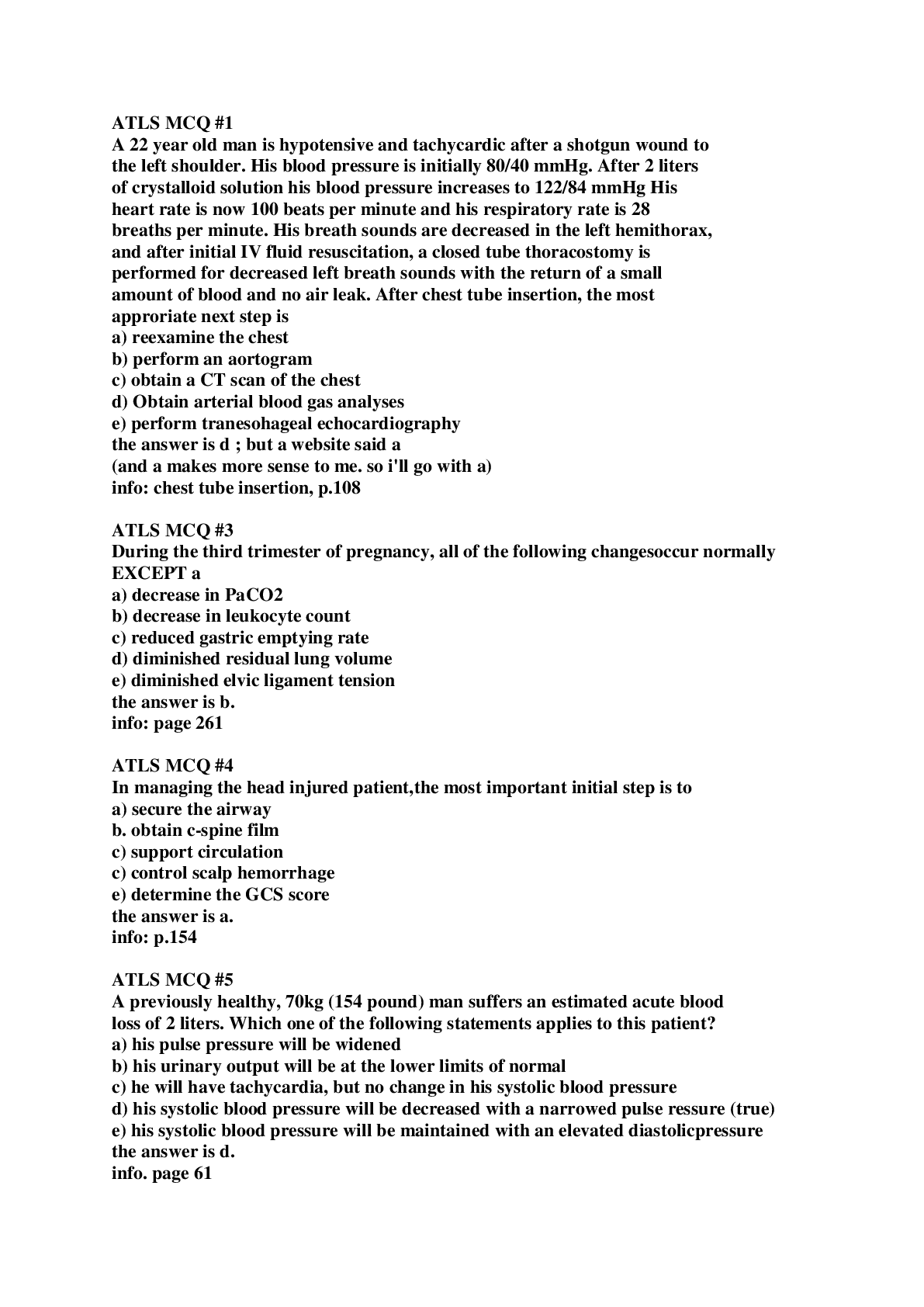
Also available in bundle (1)

ATLS EXAM QUESTIONS BUNDLE
Are you revising for ATLS 10 exam? This bundle is for you to test your knowledge. The questions are based from the ATLS Advanced Trauma Life Support tenth (10th) edition Student Course Manual.
By STUDY-GUIDENOTES 2 years ago
$20
10
Reviews( 0 )
Document information
Connected school, study & course
About the document
Uploaded On
Nov 11, 2021
Number of pages
12
Written in
Additional information
This document has been written for:
Uploaded
Nov 11, 2021
Downloads
0
Views
176

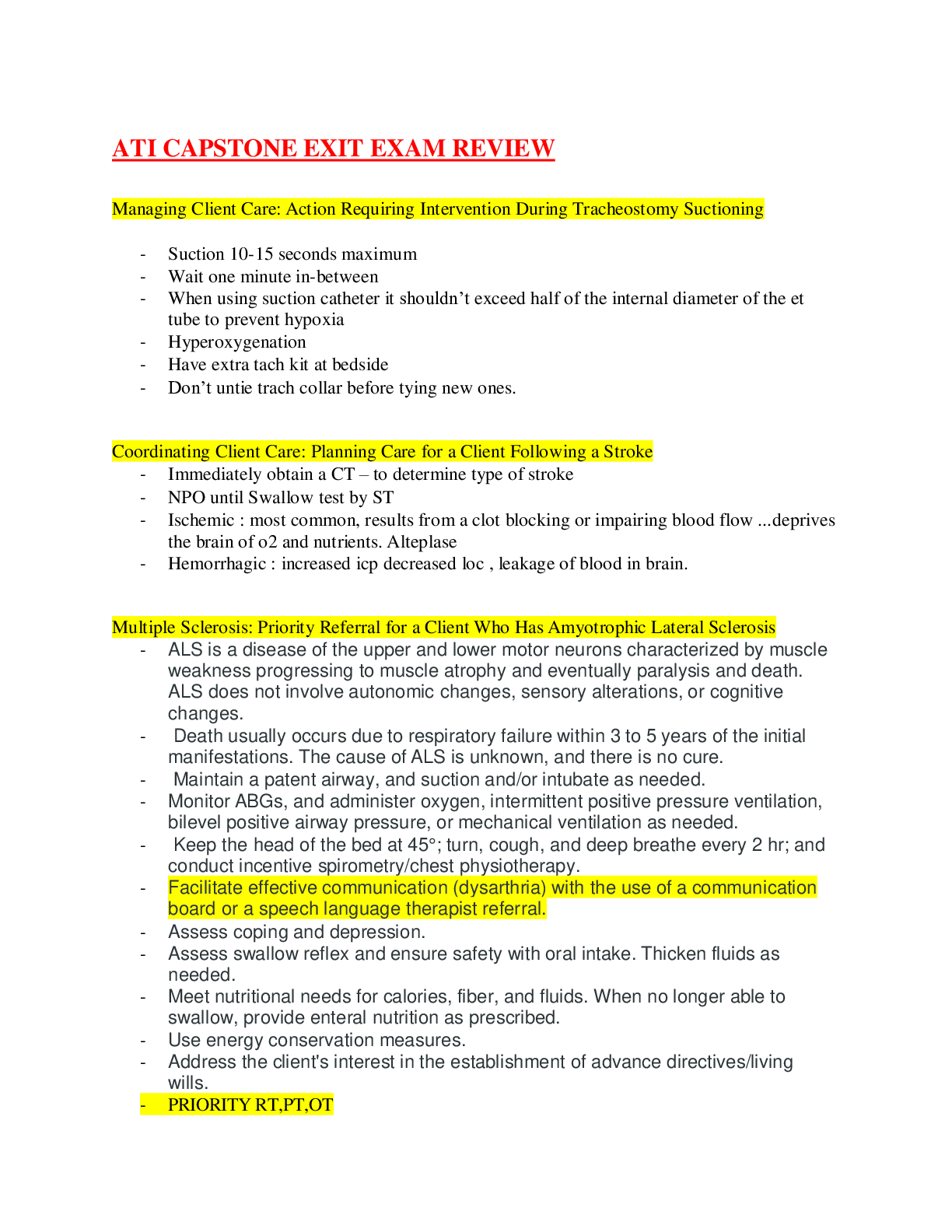
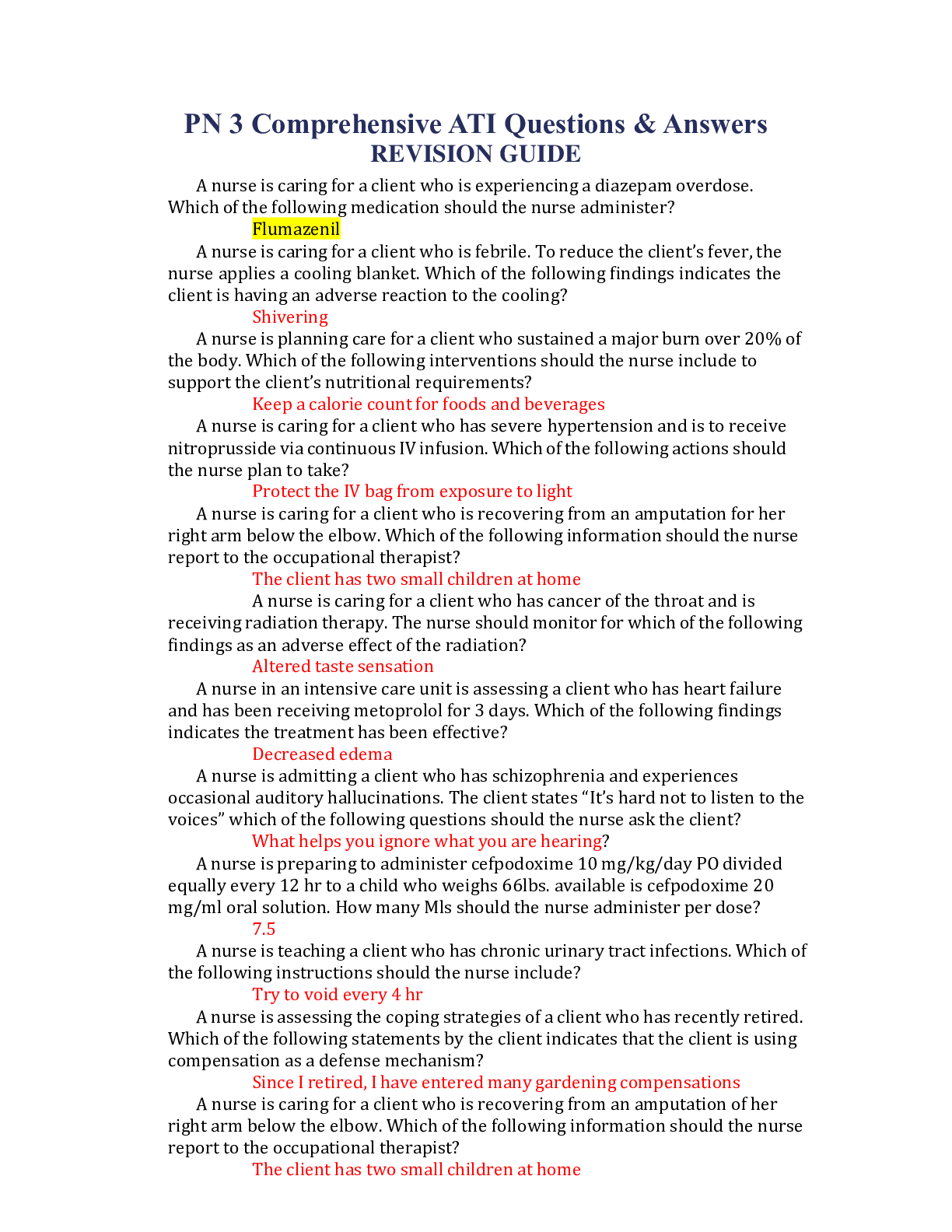
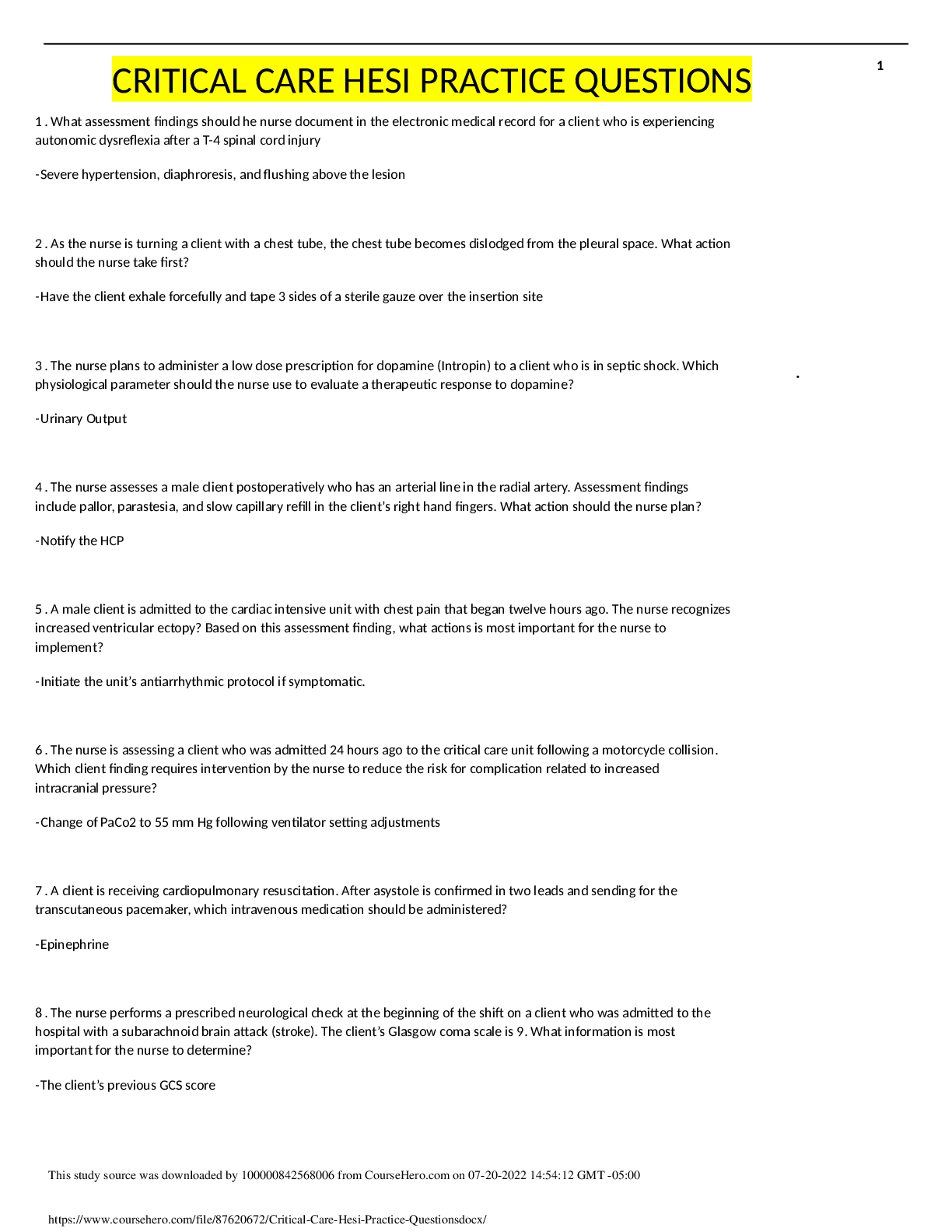

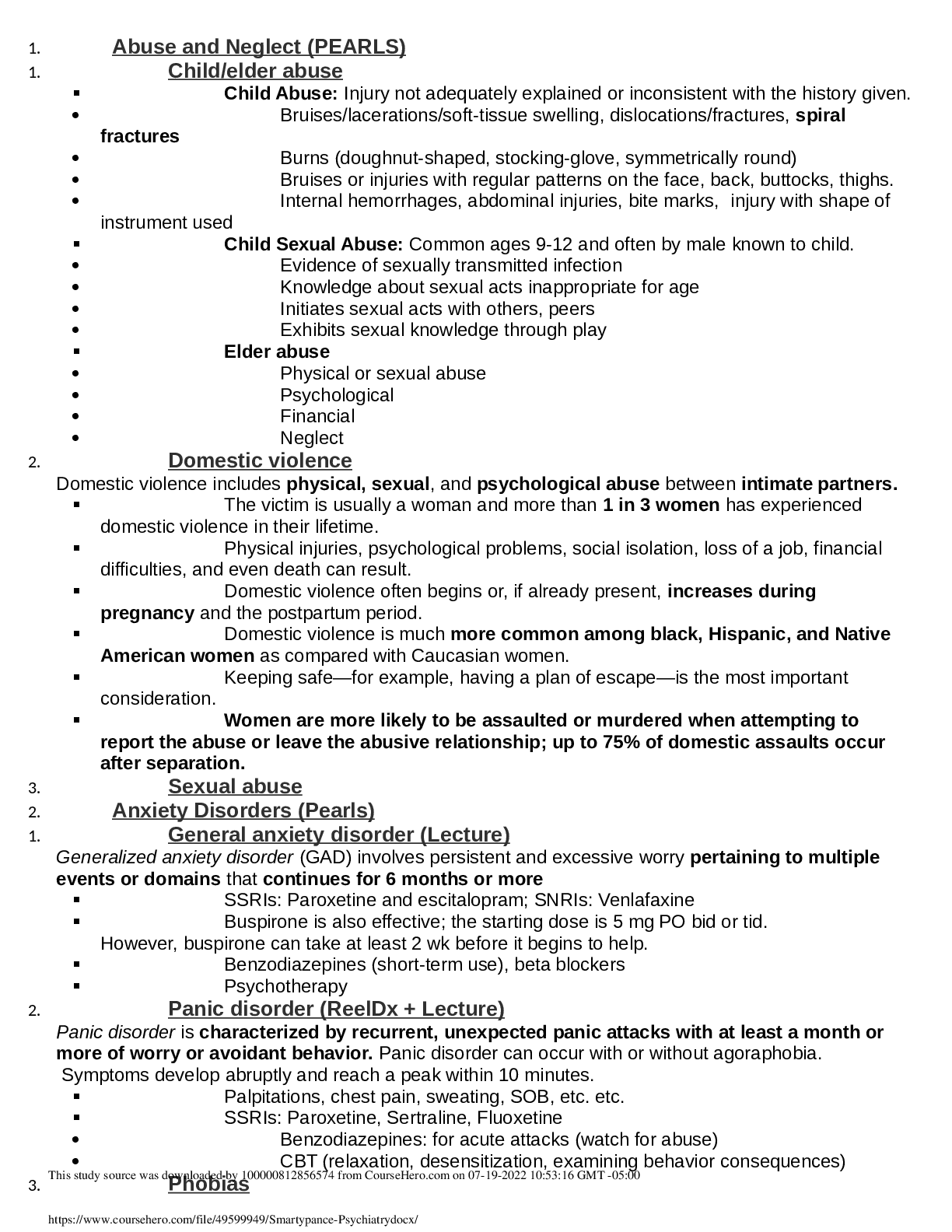



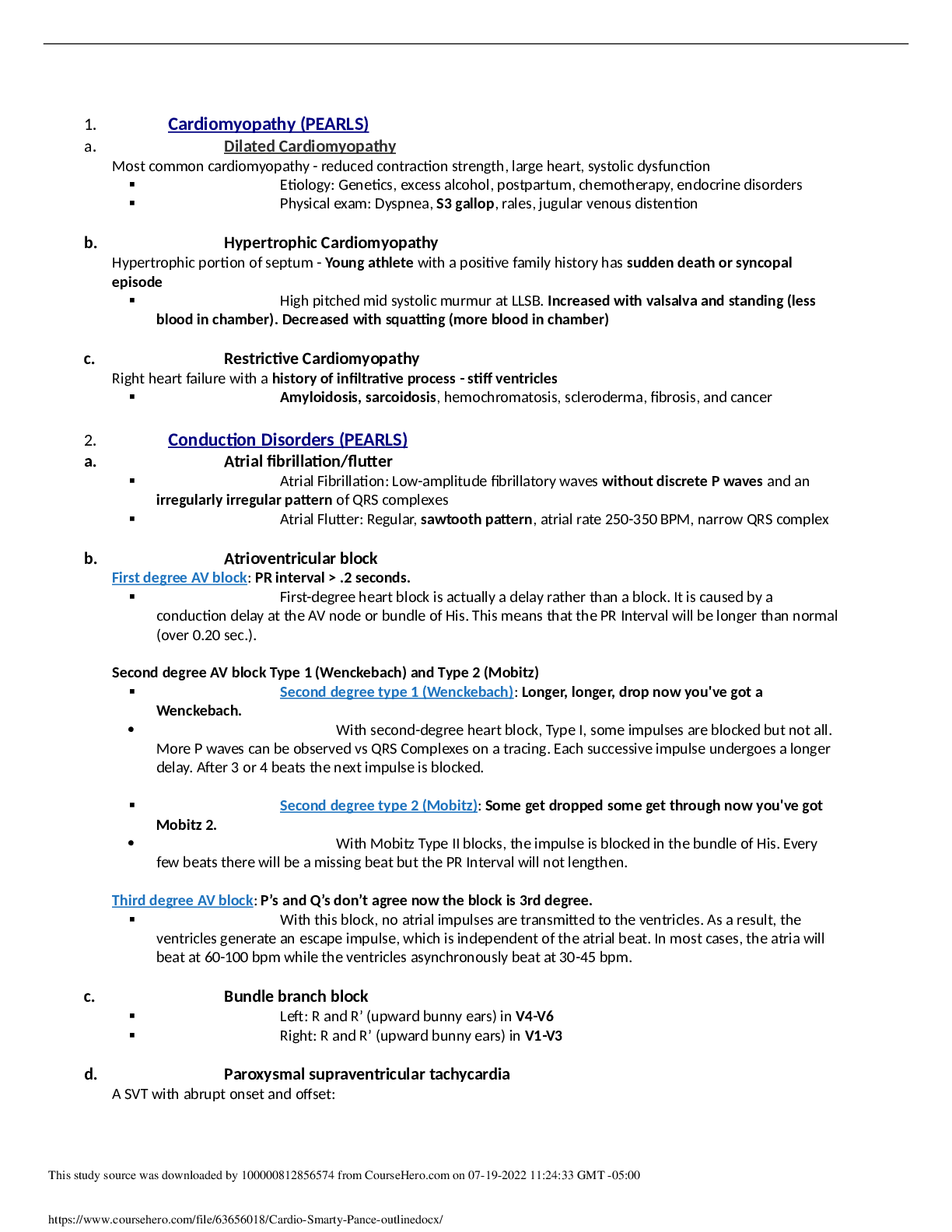

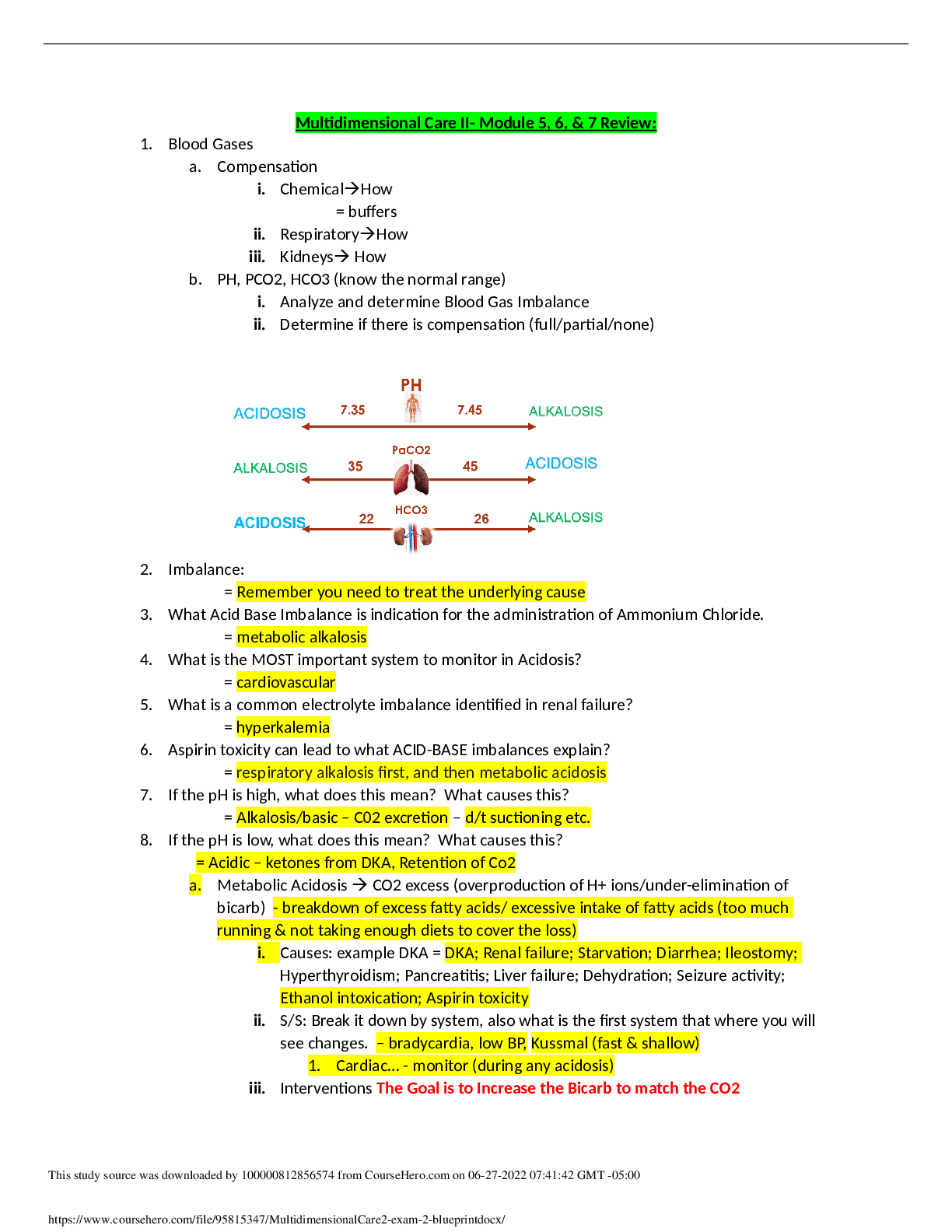
.png)
